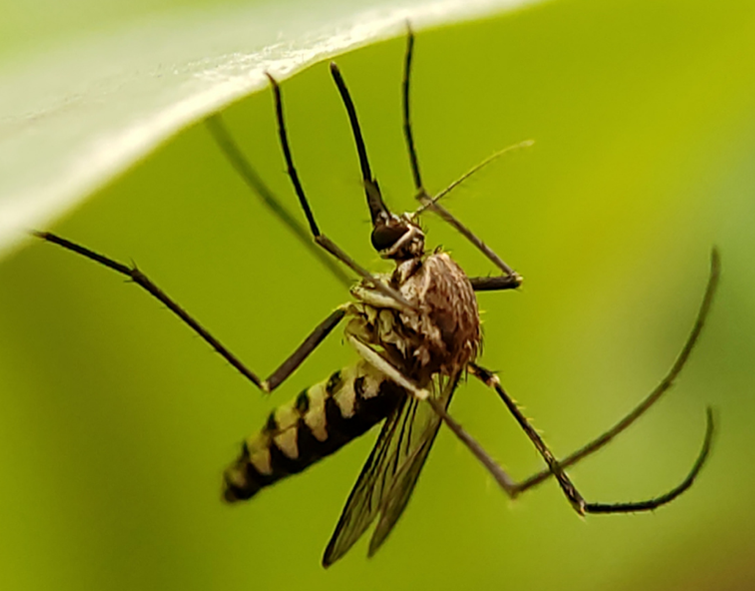Geraniol, this plant-inspired alternative to traditional insecticides
Geraniol is a colorless liquid with a sweet smell of floral fragrance. It is naturally present in geranium, rose or citrus fruits. It also has olfactory and gustatory properties, which make it already commonly used in perfumery and in the food industry (ice cream, sweets, caramels …).
Geraniol has long been used in perfume design, but did you know that it has many other properties, including insecticidal properties? For example, geraniol candles can be 3.5 times(1) more effective than lemongrass candles at repelling insects! A brief overview of a product that could well facilitate your fight against mosquitoes and other parasites present on your home textiles, while having a controlled environmental impact and being unclassified for the aquatic environment.
What is geraniol?
Geraniol is a chemical compound of the terpene family. This is called a monoterpene acyclic alcohol. It is found in essential oils from plants such as geranium oil, Palmarosa oil, Java lemongrass oil or rose oil…
In addition to its use as a fragrance agent, science has determined that geraniol has many uses. Indeed, this terpene has antioxidant, anti-inflammatory and potentially anti-fungal properties(2). But that’s not all, we now know that geraniol also works as an effective pesticide against insects, but also against mites. Finally, the researchers discovered that geraniol in addition to being a very good insect repellent and insecticide is easily biodegradable. This means that it is capable of degrading in the environment.
Geraniol, a sustainable insecticide or repellent
The properties of geraniol allow it to be effective against a wide range of insects. In addition, geraniol formulated by Breyner is not classified as a skin sensitizer and can be sprayed inside and out, does not damage clothing, fabrics or plastics. It is chemically stable and especially non-neurotoxic for humans and what does not spoil anything, it has a very pleasant smell and has a controlled environmental impact and is unclassified for the aquatic environment.
Traditional insecticide spraying usually requires you, your family and pets to leave the premises for a period of time, while with geraniol the product attacks insects, while respecting your home.
How does it work?

Geraniol is mainly used as a mosquito and tick repellent, is to be applied diluted on clothing and has proven effectiveness thanks to Breyner’s formulation know-how. It is also effective against mites, ants, bedbugs, … As part of its insecticidal properties, Geraniol acts directly on the insect’s cuticle (called chitin)
by dehydrating her, thus blocking her breathing. Unlike many biocidal substances, Geraniol does not act on the nervous system of insects, so it does not have a neurotoxic effect on pests.
Geraniol is an effective alternative to conventional insecticides. It makes it possible to fight effectively, among others, against mites, bedbugs, mosquitoes … Indeed, as a founding member of the Geraniol Biocide Task Force, Breyner is listed by ECHA as an official supplier of geraniol for TP18 (insecticides) and TP19 (repellents) products.
To learn more about geraniol and its properties, contact our experts. Follow our news on Facebook and LinkedIn
Sources:
(1) https://pubmed.ncbi.nlm.nih.gov/20836800/
(2) NCBI, The antitumor effects of geraniol: Modulation of cancer hallmark
pathways (Review), retrieved January-09-2019
Link
(3) Springer, Geraniol interferes with
membrane functions in strains ofCandida andSaccharomyces, retrieved
January-09-2019
Link
(4) NCBI, Geraniol attenuates fibrosis
and exerts anti-inflammatory effects on diet induced atherogenesis by NF-κB
signaling pathway., retrieved
January-09-2019
Link
(5) Wiley Online Library, Protective effects of geraniol (a monoterpene) in a
diabetic neuropathy rat model: Attenuation of behavioral impairments and
biochemical perturbations, retrieved January-09-2019
Link
(6) https://academic.oup.com/jme/article/45/3/533/906943?login=false







